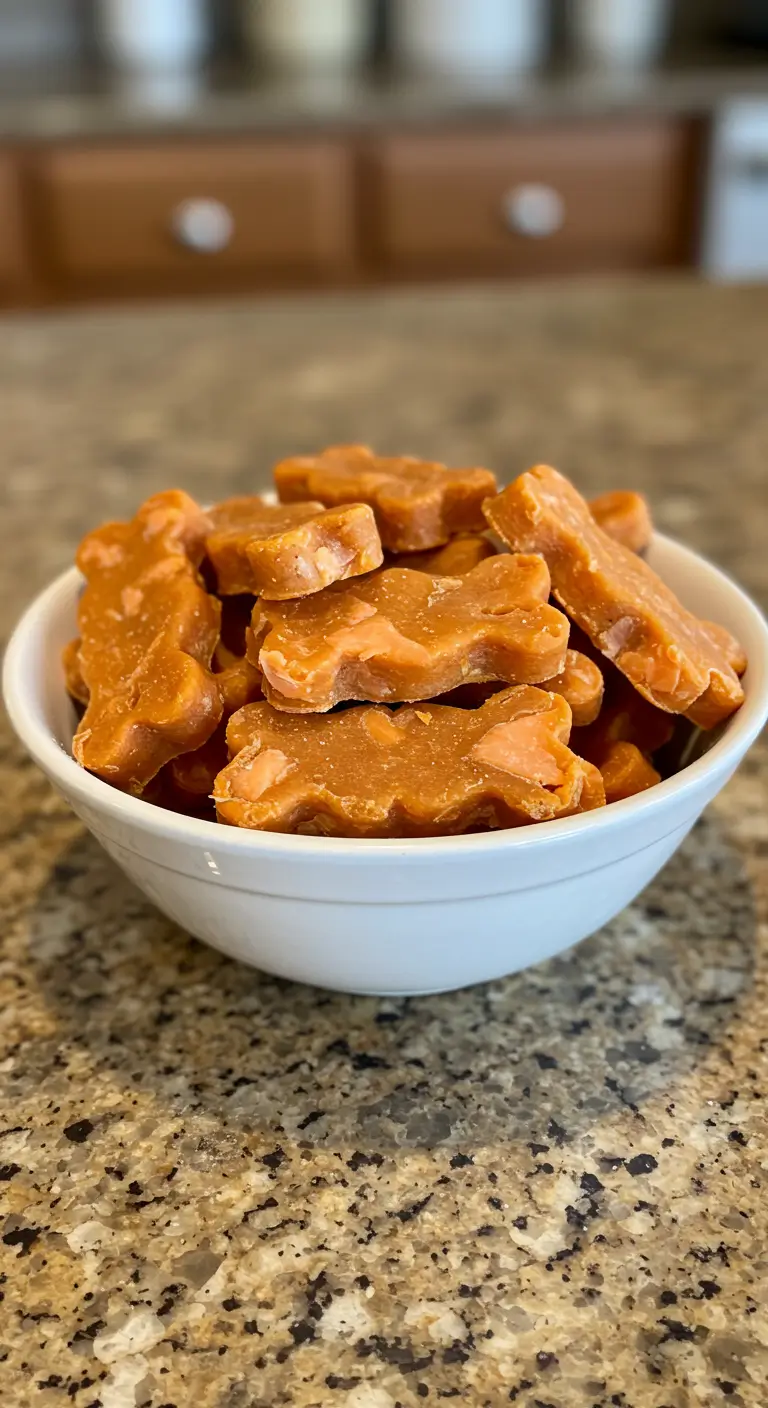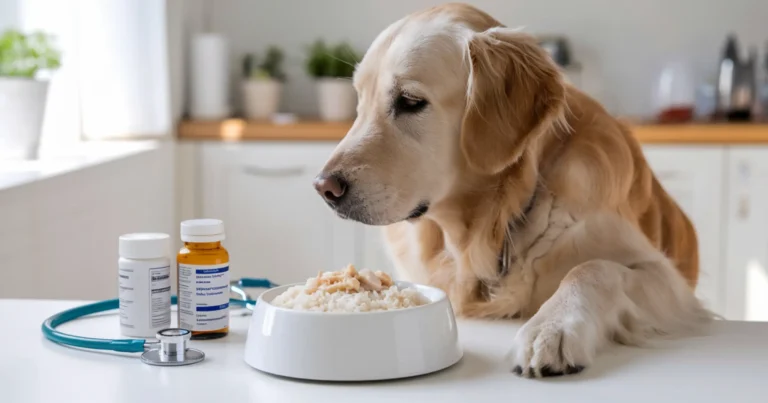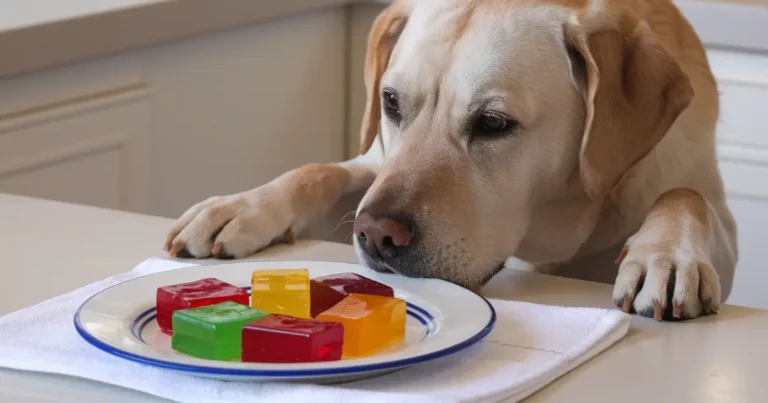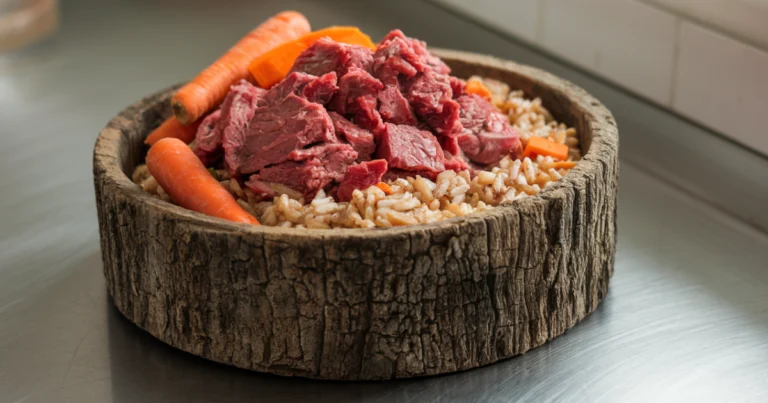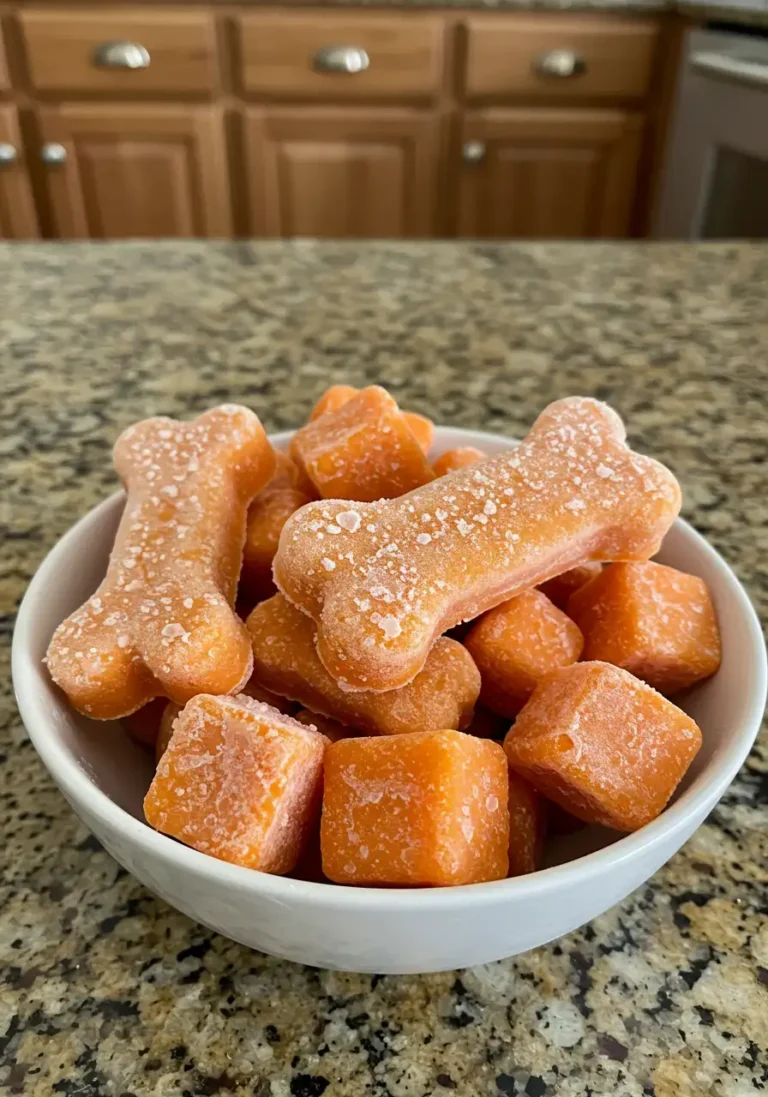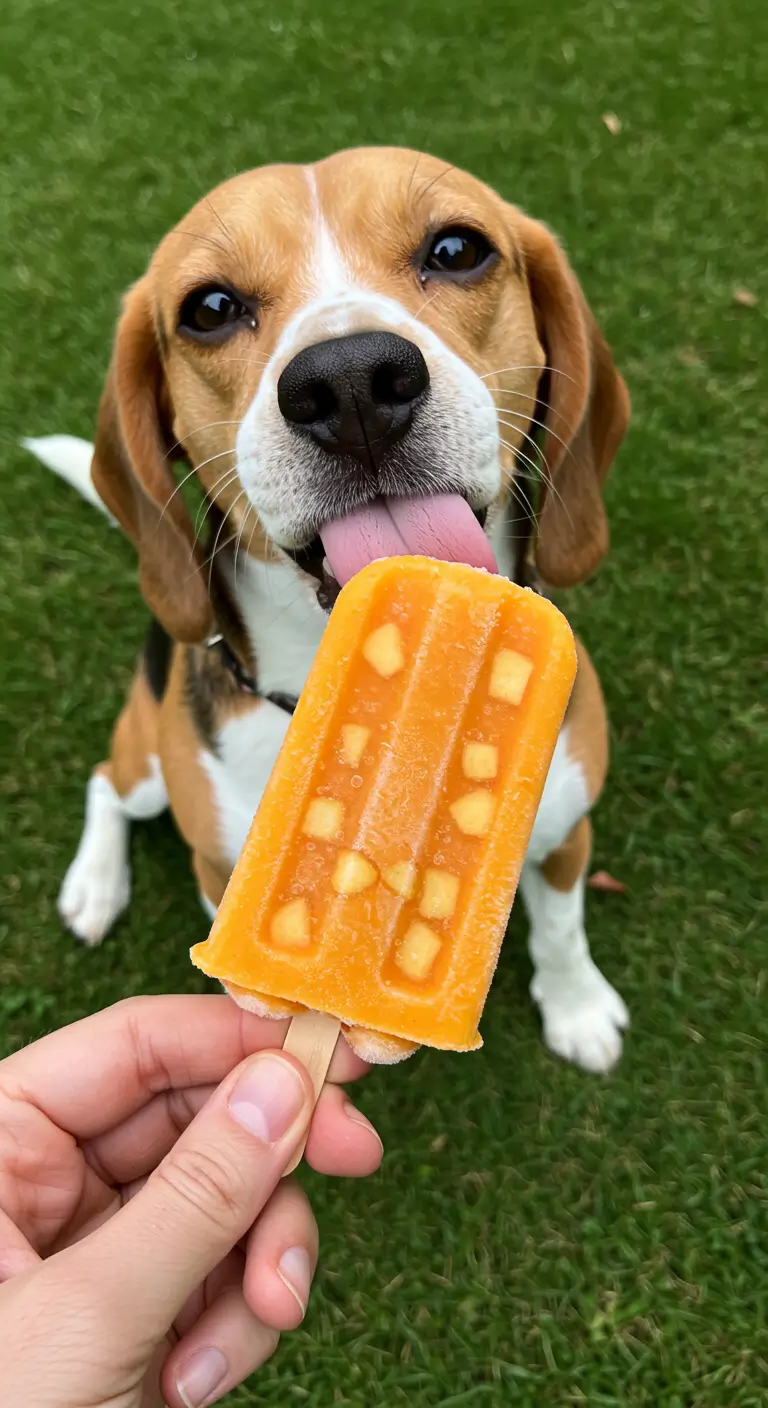Salmon Dog Treats Recipe: Sweet Potato Chews 30-Min
The first time I tried this salmon dog treats recipe, Benji was napping in his favorite sunny spot by the window. But the moment that incredible aroma started wafting from the oven, he bolted upright with his nose twitching like crazy! I’ve never seen him move so fast from deep sleep to full alertness. It was like someone had pressed his “treat radar” button.
What started as an experiment with leftover sweet potatoes turned into our most requested homemade salmon dog treats. The combination creates these amazing chewy treats that Benji actually does little spins for – and trust me, he’s usually way too dignified for such displays of excitement!
Table of Contents
Nutritional Powerhouse: The Science Behind This Combo
Salmon brings incredible omega-3 fatty acids that support your dog’s brain function, joint health, and create that gorgeous glossy coat we all love seeing. These essential fats can’t be produced naturally by your dog’s body, making this salmon dog treats recipe an excellent supplement to their regular diet.
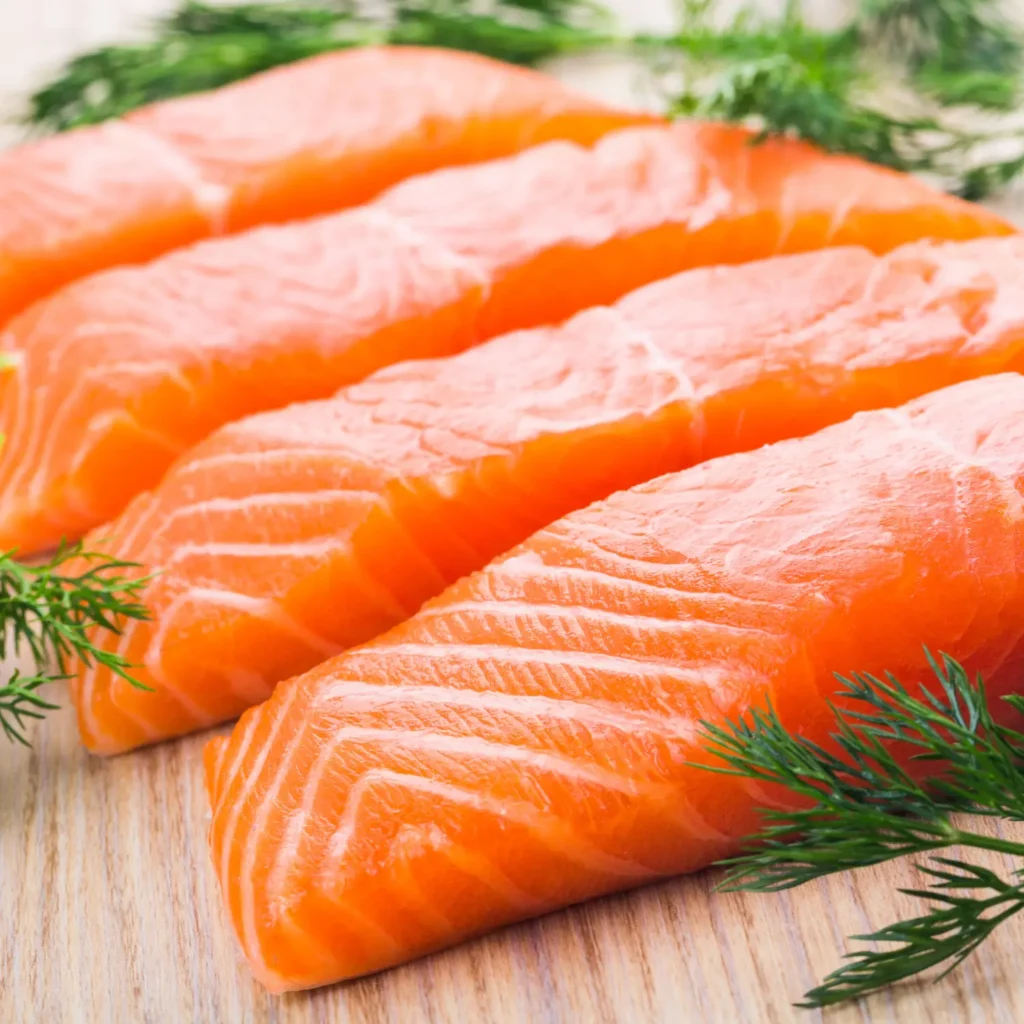
Sweet potatoes contribute beta-carotene, which converts to vitamin A for healthy vision and immune system support. They’re also loaded with fiber that promotes digestive health while providing natural sweetness dogs absolutely crave. The complex carbohydrates offer sustained energy without the sugar crashes you’d get from processed ingredients.

Together, these ingredients create soft salmon dog treats that deliver both nutrition and irresistible flavor. The natural oils from salmon help bind everything together, while sweet potatoes add moisture and that perfect chewy texture that makes these treats so special.
Your Complete Cooking Guide
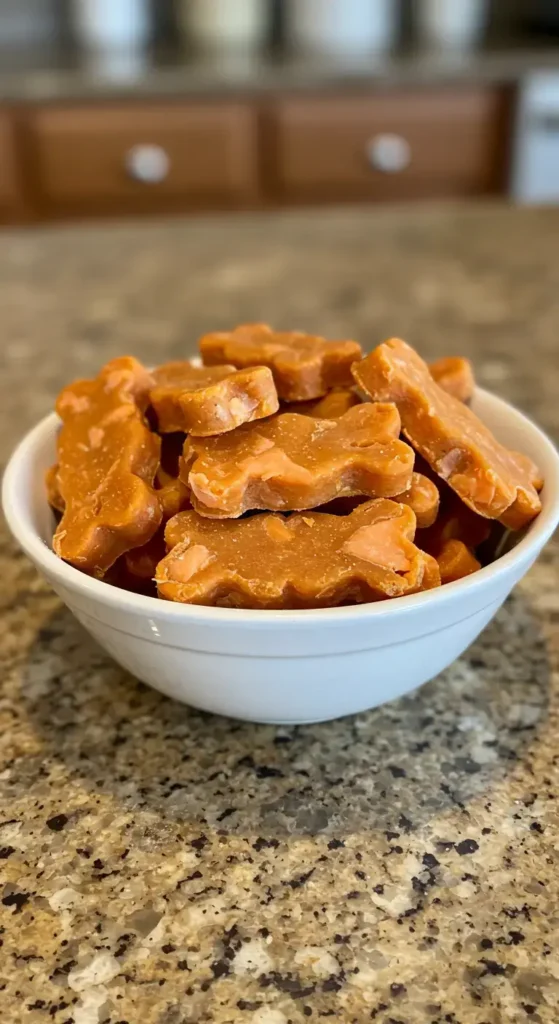
Recipe Snapshot
These salmon and sweet potato dog food treats work perfectly for training sessions, reward giving, or just because your pup deserves something amazing. The soft texture makes them ideal for dogs who struggle with harder biscuits.
| Prep Time | Cook Time | Total Time | Yield |
|---|---|---|---|
| 20 minutes | 10 minutes | 30 minutes | 30 treats |
Shopping List
Essential Components:
- 1 cup cooked salmon (skin and bones removed)
- 1 large sweet potato (roasted and mashed)
- 2 large eggs
- 1 1/2 cups oat flour
- 3 tablespoons coconut oil (melted)
Flavor Boosters:
- 1 tablespoon fresh dill (chopped)
- 1/2 teaspoon turmeric powder
Kitchen Arsenal
This salmon dog treats recipe requires minimal equipment that most home cooks already own:
- A food processor or a large fork for mashing
- Large mixing bowl
- Measuring tools
- Small cookie scoop
- Rimmed baking sheet
- Parchment paper
- Wire rack for cooling
Step-by-Step Creation Process
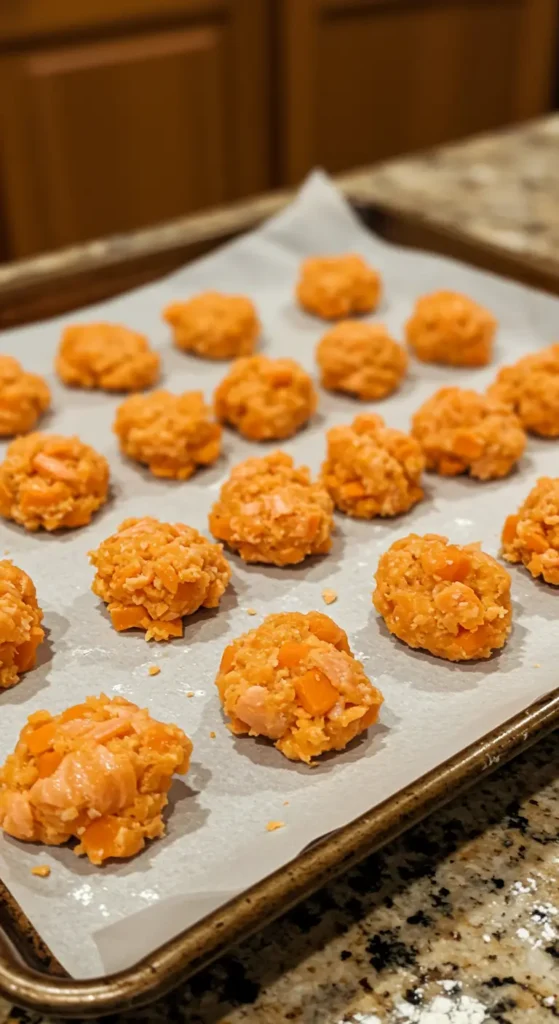
Step 1: Prep Your Workspace
Set your oven to 350°F and line your baking sheet with parchment. This temperature ensures even cooking without over-browning these delicate salmon dog treats.
Step 2: Prepare the Sweet Potato Base
If you haven’t pre-roasted your sweet potato, pierce it with a fork and microwave for 6-8 minutes until tender. After allowing it to cool, remove the meat and mash it until it’s smooth. You’ll need about 3/4 cup of mashed sweet potato for this salmon dog treats recipe.
Step 3: Flake the Salmon
Break your cooked salmon into small, uniform pieces. Check carefully for any remaining bones or skin pieces that might have been missed during initial preparation.
Step 4: Create the Mixture
Combine mashed sweet potato, flaked salmon, eggs, and melted coconut oil in your large bowl. Mix thoroughly until everything is well incorporated and you have a cohesive base for your homemade salmon dog treats.
Step 5: Add Dry Ingredients
Add the optional seasonings and oat flour gradually. The dough should hold together nicely without being too wet or crumbly. Adjust flour as needed to achieve the right consistency.
Step 6: Shape and Bake
Using your cookie scoop, portion the mixture into 30 small portions on your prepared sheet. These soft salmon dog treats need about 8-10 minutes in the oven until they’re set but still slightly soft to touch.
Serving Recommendations
Introduce this salmon dog treats recipe gradually, starting with half a treat to ensure your dog tolerates the new ingredients well. Most dogs can enjoy 2-3 treats daily, adjusted based on their size and overall caloric needs.
For training purposes, break these soft dog treats into smaller pieces to maintain motivation without overfeeding during lengthy sessions. The salmon flavor is so appealing that even tiny pieces create powerful training incentives.
Troubleshooting Common Challenges
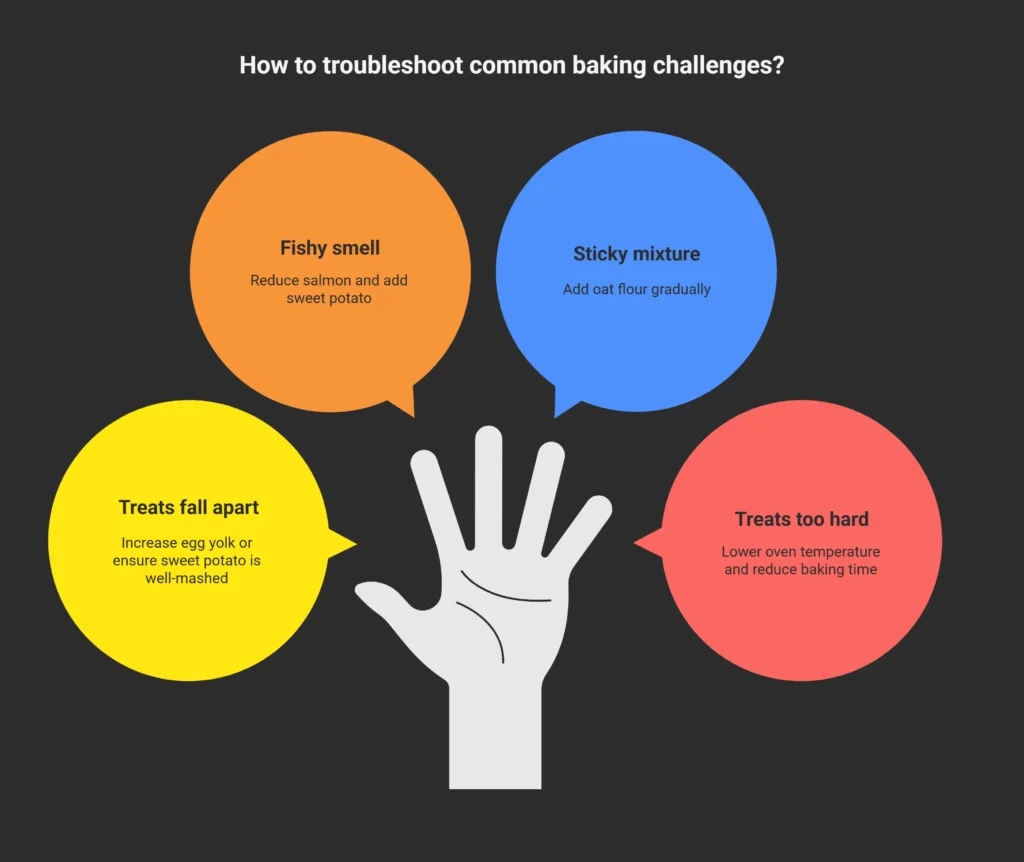
Challenge: Treats fall apart during baking
Increase egg content by adding one extra egg yolk, or ensure your sweet potato is thoroughly mashed without lumps that could create weak spots.
Challenge: Fishy smell seems overwhelming
Reduce the salmon to 3/4 cup and add an extra 1/4 cup of mashed sweet potato to balance the flavors in your salmon dog treats recipe.
Challenge: Mixture is too sticky to handle
Gradually add more oat flour, one tablespoon at a time, until the dough becomes manageable but still moist.
Challenge: Treats turn out too hard
Lower your oven temperature to 325°F and reduce baking time by 1-2 minutes. These should remain soft and chewy, not crispy.
Smart Storage Strategies
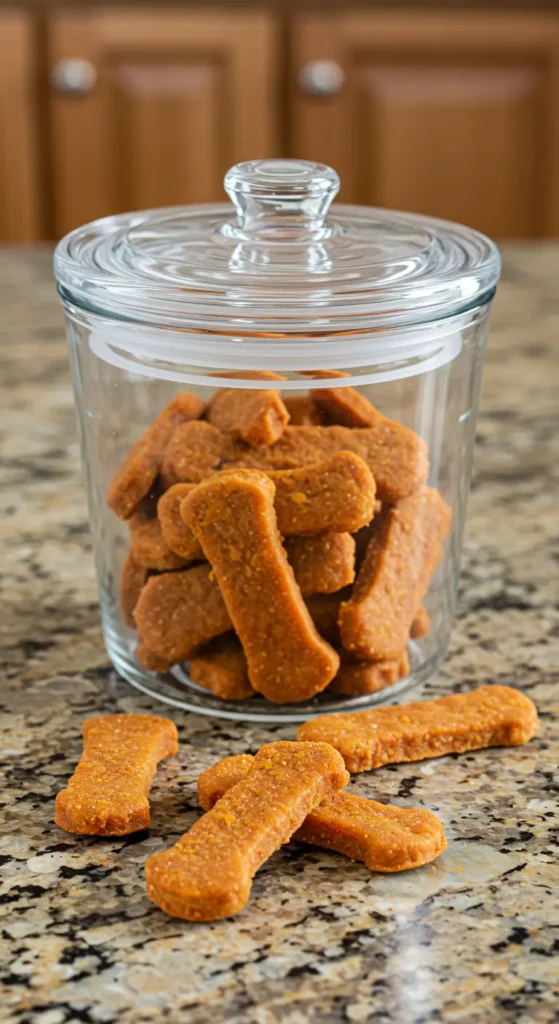
Keep your finished homemade salmon dog treats in sealed containers in the refrigerator for up to one week. The high moisture content from sweet potatoes means these treats need cold storage to maintain freshness and prevent spoilage.
For extended storage, freeze individual treats on a tray before transferring to freezer bags. They can be frozen for up to three months. Thaw treats in the refrigerator overnight, or let them sit at room temperature for 15 minutes before serving.
Consider portioning treats into daily amounts immediately after making them. This prevents repeated exposure to air and temperature changes that can affect the texture and freshness of your salmon and sweet potato dog food treats.
Why Homemade Beats Commercial Every Time
Creating your own soft salmon dog treats means controlling every single ingredient that goes into your dog’s body. Commercial salmon treats often contain preservatives, artificial colors, and mystery “natural flavors” that could trigger sensitivities in sensitive pups.
This salmon dog treats recipe costs roughly $5 to make, while equivalent premium treats in pet stores can run $12-18 for similar quantities. You’re literally saving money while providing superior nutrition and freshness.
The satisfaction factor is huge too. Benji definitely recognizes the difference between treats I’ve made versus store-bought options. His enthusiasm level when he hears me working in the kitchen versus opening a commercial package is completely different – there’s no comparison!
Adventure Into Other Flavors
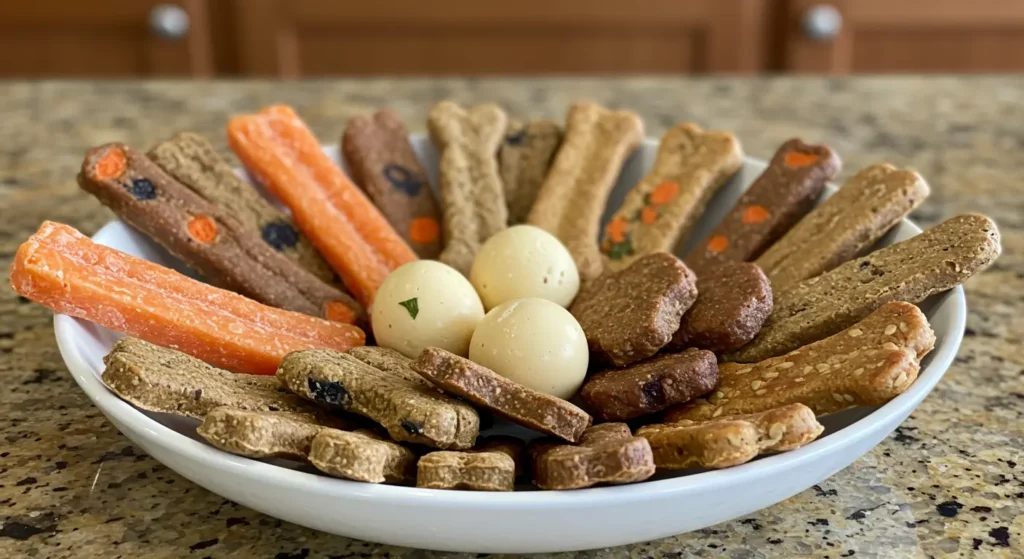
Ready to expand beyond this salmon dog treats recipe? Explore Duck & Blueberry Soft Bites for antioxidant-rich alternatives, or try Beef & Carrot Nuggets for classic flavor combinations most dogs go crazy for. Egg & Oatmeal Soft Bites offer gentle nutrition perfect for sensitive stomachs. Don’t miss our lamb dog treats with mint for unique Mediterranean flavors, our protein-packed turkey dog treats with cranberry for antioxidant benefits, or our reliable soft chicken dog treats with rice for tried-and-true favorites.
Browse our comprehensive guide to soft and chewy dog treats for additional techniques and flavor inspiration!
Important Safety Considerations
Always use fully cooked salmon with all bones and skin completely removed. Raw salmon can contain parasites that are dangerous for dogs, so proper cooking is non-negotiable for this salmon dog treats recipe.
Avoid seasoned or smoked salmon products, which often contain excessive sodium or seasonings that aren’t appropriate for canine consumption. Plain, cooked salmon works best for these homemade treats.
Store treats properly in cold temperatures to prevent bacterial growth. The combination of fish and sweet potato creates a moist environment that bacteria love, so refrigeration isn’t optional – it’s essential for safety.
Final Reflections
This salmon dog treats recipe has become our Sunday afternoon tradition, with Benji acting as my enthusiastic sous chef (mostly by providing moral support from his kitchen mat). The combination of salmon and sweet potato creates something truly special that you simply cannot find in any store.
Watching your dog’s excitement over treats you’ve crafted with your own hands creates this amazing connection that goes beyond just feeding them. These soft dog treats represent time, care, and love – ingredients that no commercial manufacturer can ever replicate, no matter how fancy their packaging looks!
Frequently Asked Questions
Can I use canned salmon for this salmon dog treats recipe?
Absolutely! Choose salmon packed in water rather than oil, and drain thoroughly before using. Rinse canned salmon to remove excess sodium before incorporating it into your homemade salmon dog treats.
What if my dog has fish allergies?
Skip this recipe entirely and try our other protein options instead. Fish allergies can be serious, so don’t risk it with any salmon-based treats.
Can I substitute regular flour for oat flour?
Yes, but oat flour digests more easily for most dogs. If using regular flour, choose whole wheat and use the same measurements for this salmon dog treats recipe.
How do I know if sweet potatoes are fully cooked?
They should pierce easily with a fork and feel soft throughout. Under-cooked sweet potatoes won’t mash properly and can create lumpy textures in your finished soft salmon dog treats.
Can puppies eat this salmon and sweet potato dog food treats?
Puppies over 12 weeks can try small portions, but break treats into appropriate sizes for their tiny mouths and developing digestive systems.
Should I remove the sweet potato skin?
Yes, remove all skin before mashing. Sweet potato skins can be tough for dogs to digest and might create choking hazards in smaller treats.
References
- American Kennel Club – Fish Safety for Dogs
- PetMD – Sweet Potato Benefits for Dogs
- Veterinary Nutrition Council – Omega-3 Fatty Acids
Your Dog Tried It? Drop a Review Below!
There are no reviews yet. Be the first one to write one.

